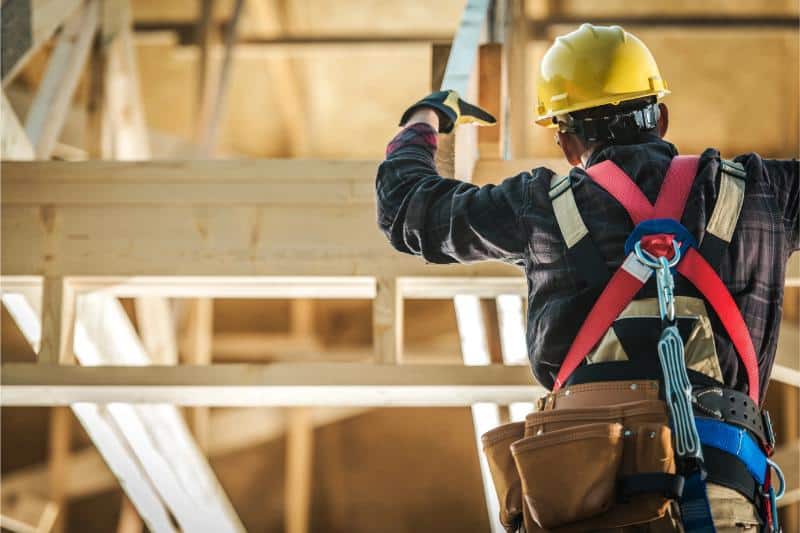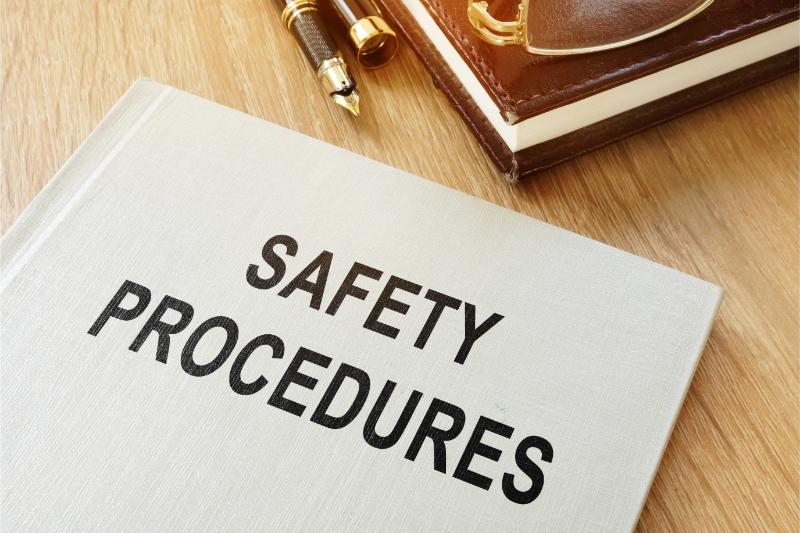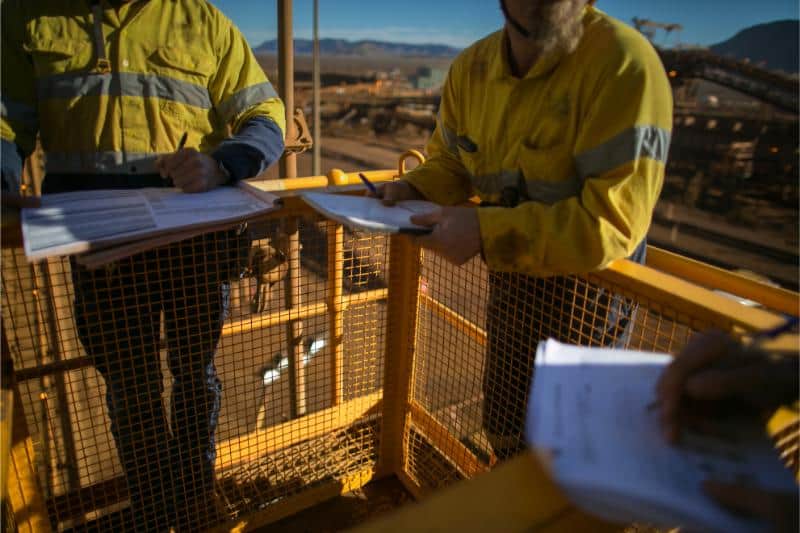Understanding Compliance: The Foundation of Safe Construction Sites
In the dynamic world of construction, compliance with safety regulations isn’t merely a legal obligation – it’s the bedrock upon which a credible and trustworthy business is built. This is especially true in Phoenix, Arizona, where the construction industry thrives, and maintaining a safe working environment is non-negotiable. Compliance is the foundation that ensures every project is executed with utmost professionalism, safeguarding the well-being of workers, adhering to industry standards, and preventing costly legal complications.
At its core, compliance forms the backbone of a reputable construction company, assuring clients of its commitment to upholding the highest safety standards. It’s a testament to a company’s dedication to protecting its workforce, minimizing risks, and delivering projects on time while prioritizing the welfare of all stakeholders. In an industry where even the slightest oversight can have severe consequences, compliance is a non-negotiable imperative.
Phoenix, AZ Regulations: What You Need to Know
Construction sites in Phoenix, Arizona, are subject to a comprehensive set of local, state, and federal safety regulations designed to protect workers and ensure project integrity. The Arizona Division of Occupational Safety and Health (ADOSH) is the primary regulatory body overseeing workplace safety in the state, and its requirements are comprehensive and stringent.
Some key areas that construction companies in Phoenix must prioritize include:
- Personal Protective Equipment (PPE): Ensuring workers have access to and use appropriate PPE, such as hard hats, safety glasses, and reflective vests, to mitigate risks associated with construction activities.
- Fall Protection: Implementing fall prevention systems, guardrails, and other safety measures to protect workers from falls, which are among the leading causes of construction site injuries and fatalities.
- Excavation Safety: Following strict guidelines for trench and excavation work, including proper shoring, sloping, and monitoring to prevent cave-ins and other hazards.
- Crane and Heavy Equipment Operation: Adhering to regulations governing the safe operation, inspection, and maintenance of cranes, forklifts, and other heavy machinery to prevent accidents and equipment failures.
- Hazardous Materials Handling: Ensuring the proper storage, labeling, and disposal of hazardous materials, such as asbestos, lead, and chemicals, to protect workers and the environment.
By staying up-to-date with these regulations and integrating them into their operations, construction companies can create a safe and compliant working environment, minimizing risks and potential legal repercussions.
Essential Compliance Practices for Every Construction Site
To cultivate a culture of safety and maintain compliance, construction companies must implement a range of essential practices. These practices not only ensure adherence to regulations but also contribute to the creation of a hazard-free environment and efficient operations:
- Regular Safety Audits: Conducting routine inspections and audits to identify potential hazards, assess compliance with safety protocols, and implement corrective actions where necessary.
- Employee Training Programs: Providing comprehensive training to workers on safety procedures, proper use of equipment, and emergency protocols, ensuring they have the knowledge and skills to perform their jobs safely.
- Standardized Safety Protocols: Developing and enforcing clear, written safety protocols that outline procedures for various tasks, ensuring consistency and reducing the risk of errors or oversights.
- Incident Reporting and Investigation: Implementing a system for reporting and thoroughly investigating accidents, near-misses, and safety incidents, enabling the identification of root causes and the implementation of preventive measures.
- Safety Meetings and Toolbox Talks: Conducting regular safety meetings and toolbox talks to reinforce safety practices, discuss potential hazards, and foster open communication about safety concerns.
By prioritizing these practices, construction companies can foster a proactive safety culture, empower their workforce, and ensure compliance with regulations while minimizing the risks associated with construction activities.
Building a Culture of Safety: Employee Involvement and Training
While implementing safety protocols and adhering to regulations is crucial, fostering a culture of safety within the organization is equally important. A culture where safety is ingrained in every aspect of operations, and employees are actively engaged in identifying and mitigating risks, can significantly improve compliance and reduce accidents.
Strategies for building a safety-first culture include:
- Employee Training and Education: Providing comprehensive, ongoing training programs that cover safety protocols, hazard identification, and emergency response procedures, ensuring all workers have the knowledge and skills to perform their jobs safely.
- Safety Workshops and Drills: Conducting regular safety workshops and drills to reinforce best practices, test emergency preparedness, and encourage active participation from employees in identifying potential hazards and problem-solving.
- Employee Involvement in Safety Planning: Engaging employees in the development and review of safety plans, policies, and procedures, leveraging their on-site experience and insights to create more effective and practical safety measures.
- Safety Incentive Programs: Implementing incentive programs that recognize and reward employees for their commitment to safety, encouraging proactive reporting of hazards, and promoting a culture of accountability and responsibility.
- Open Communication and Feedback: Fostering an environment where employees feel empowered to voice their safety concerns, report incidents, and provide feedback without fear of retaliation, enabling the continuous improvement of safety practices.
By actively involving employees in safety initiatives and cultivating a workplace culture that prioritizes safety, construction companies can create a more aware, responsible, and engaged workforce, ultimately enhancing compliance and reducing the risk of accidents and incidents.
Technological Tools for Ensuring Compliance
In today’s rapidly evolving construction landscape, technology has emerged as a powerful ally in ensuring compliance and enhancing site safety. Innovative technological tools and solutions are revolutionizing the way construction companies approach safety and compliance, streamlining processes, and providing real-time data and insights.
Some cutting-edge technologies that are transforming the compliance landscape include:
- Site Monitoring Software: Advanced software platforms that utilize sensors, cameras, and data analytics to monitor construction sites in real-time, identifying potential hazards, tracking worker movements, and ensuring compliance with safety protocols.
- 2. Digital Training Modules: Interactive, multimedia-based training modules that provide immersive and engaging safety education, enabling employees to learn at their own pace and reinforcing critical safety concepts through interactive simulations and assessments.
- 3. Wearable Safety Technology: Smart devices, such as helmets, vests, and wristbands, equipped with sensors and communication capabilities, enabling real-time monitoring of worker location, vital signs, and exposure to hazardous conditions.
- 4. Augmented Reality (AR) and Virtual Reality (VR): Cutting-edge technologies that create simulated construction environments, allowing workers to practice safety procedures and hazard identification in a risk-free virtual setting, enhancing training effectiveness and preparedness.
- 5. Drone Inspections: Unmanned aerial vehicles (UAVs) or drones equipped with high-resolution cameras and sensors, enabling efficient and safe inspections of hard-to-reach areas, identifying potential hazards, and monitoring compliance with safety standards.
By embracing these innovative technologies, construction companies can streamline compliance processes, enhance site safety, and gain valuable insights that can inform data-driven decision-making, ultimately reducing risks and ensuring a safer working environment for all.
Overcoming Common Compliance Challenges
Despite the best intentions and efforts, construction companies often face numerous challenges in achieving and maintaining compliance with safety regulations. These obstacles can stem from complex regulatory landscapes, budget constraints, or the ever-evolving nature of the industry itself.
Some common compliance challenges and strategies for overcoming them include:
- Complexity of Regulations: The sheer volume and complexity of local, state, and federal regulations can be overwhelming, making it challenging to stay up-to-date and ensure comprehensive compliance. Partnering with industry experts, attending training sessions, and subscribing to regulatory updates can help companies stay informed and adaptable.
- Limited Resources and Budget Constraints: Implementing comprehensive safety measures and training programs can be resource-intensive, particularly for smaller construction companies with limited budgets. Prioritizing safety investments, exploring cost-effective training solutions, and leveraging technology can help optimize resources while maintaining compliance.
- Workforce Turnover and Training: With a constantly evolving workforce, ensuring all employees receive adequate safety training and adhere to protocols can be a significant challenge. Implementing standardized onboarding processes, providing refresher training, and fostering a culture of safety accountability can help mitigate this issue.
- Resistance to Change: As with any industry, there may be resistance to adopting new safety practices or technologies, particularly among experienced workers who are accustomed to traditional methods. Effective communication, leadership buy-in, and involving employees in the change process can help overcome resistance and facilitate a smoother transition.
- Language and Cultural Barriers: Construction sites often employ a diverse workforce with varying language proficiencies and cultural backgrounds, which can create challenges in communicating safety protocols effectively. Providing multilingual training materials, leveraging visual aids, and fostering an inclusive safety culture can help bridge these gaps.
By proactively addressing these challenges and implementing targeted strategies, construction companies can overcome obstacles and ensure ongoing compliance, safeguarding their workforce and operations while maintaining a competitive edge in the industry.
The Cost of Non-Compliance: Real Risks for Construction Companies
While achieving and maintaining compliance with safety regulations may seem like a daunting task, the consequences of non-compliance can be severe and far-reaching for construction companies. Non-compliance not only puts workers’ lives at risk but can also lead to significant financial, legal, and reputational repercussions that can jeopardize a company’s success and longevity.
Some of the real risks associated with non-compliance include:
- Hefty Fines and Penalties: Regulatory agencies, such as ADOSH, have the authority to impose substantial fines and penalties for non-compliance with safety regulations. These fines can quickly accumulate, placing a significant financial burden on construction companies and potentially hindering their ability to operate effectively.
- Legal Liabilities: In the event of a worksite accident or injury resulting from non-compliance, construction companies may face costly legal battles, including lawsuits from injured workers or their families. These legal proceedings can drain resources, damage reputations, and lead to devastating financial consequences.
- Project Delays and Stoppages: Regulatory agencies can issue stop-work orders or halt projects if serious safety violations are discovered, resulting in costly project delays, missed deadlines, and potential contract breaches, jeopardizing a company’s credibility and future business opportunities.
- Reputational Damage: News of non-compliance incidents, accidents, or legal proceedings can quickly spread, tarnishing a construction company’s reputation and making it challenging to attract and retain clients, skilled workers, and industry partners.
- Increased Insurance Costs: Non-compliance and a history of safety incidents can lead to higher insurance premiums, as insurers perceive such companies as higher risk, further impacting profitability and operational costs.
By understanding the severe consequences of non-compliance, construction companies can appreciate the importance of prioritizing safety and adhering to regulations. Investing in compliance not only safeguards workers but also protects a company’s financial stability, reputation, and future growth prospects.
Compliance Checklists: Tools for Self-Assessment
To ensure ongoing compliance and maintain a safe working environment, construction companies should implement comprehensive self-assessment practices. One of the most effective tools for this purpose is a compliance checklist, tailored specifically for construction sites in Phoenix, Arizona.
A well-designed compliance checklist should cover the following key components:
- Documentation Requirements: Verifying the availability and completeness of essential documentation, such as safety plans, training records, permits, and incident reports, ensuring compliance with recordkeeping regulations.
- Inspection Schedules: Outlining a schedule for regular inspections of the worksite, equipment, and safety systems, including checks for personal protective equipment (PPE), fall protection systems, and hazardous material handling procedures.
- Safety Equipment Checks: Ensuring the proper functioning, maintenance, and availability of safety equipment, such as fire extinguishers, first-aid kits, and emergency communication devices.
- Employee Certifications: Confirming that all workers have obtained the necessary certifications and training for their respective roles, including equipment operation, hazardous material handling, and emergency response procedures.
- Hazard Identification: Conducting thorough assessments of potential hazards on the construction site, including fall risks, electrical hazards, excavation risks, and exposure to hazardous materials.
- Regulatory Compliance Audit: Reviewing the site’s compliance with local, state, and federal regulations, including ADOSH requirements, environmental regulations, and permit conditions.
By regularly conducting self-assessments using a comprehensive compliance checklist, construction companies can proactively identify and address potential areas of non-compliance, mitigate risks, and ensure a consistently safe and compliant work environment.
Future-Proofing Your Site: Adapting to Evolving Regulations
In the dynamic construction industry, regulations and safety standards are constantly evolving to address emerging risks, incorporate new technologies, and enhance worker protection. As such, it is crucial for construction companies to stay ahead of these changes and proactively adapt their compliance practices to ensure long-term safety and success.
Strategies for future-proofing construction sites and maintaining compliance include:
- Regulatory Monitoring: Actively monitoring regulatory agencies, industry associations, and reputable news sources for updates on changes to safety regulations, new standards, and emerging best practices, ensuring that compliance efforts remain up-to-date and aligned with the latest requirements.
- Continuous Training and Education: Implementing ongoing training and education programs for employees, ensuring they stay informed about changes in regulations, new safety protocols, and the integration of emerging technologies that impact compliance and site safety.
- Embracing Technological Innovations: Proactively exploring and adopting new technologies that can enhance compliance efforts, such as advanced site monitoring systems, wearable safety devices, and digital training platforms, leveraging their capabilities to streamline processes and improve safety outcomes.
- Collaboration and Knowledge Sharing: Fostering collaboration with industry peers, attending conferences and networking events, and participating in knowledge-sharing forums to gain insights into best practices, lessons learned, and strategies for adapting to evolving regulations and industry trends.
- Agile Safety Management Systems: Implementing flexible and adaptable safety management systems that can readily incorporate changes in regulations, integrate new technologies, and evolve with the company’s growth and operational needs.
By embracing a proactive and forward-thinking approach to compliance, construction companies can position themselves as industry leaders, mitigate risks, and maintain a competitive edge in an ever-changing regulatory landscape, ensuring the long-term sustainability and success of their operations.





